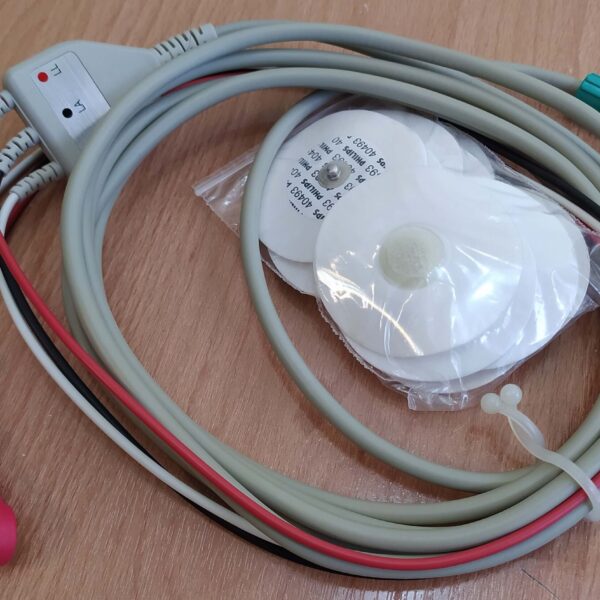
دسته: Ultrasonic Devices
فیلتر محصولات
در حال نمایش یک نتیجه
What is an ultrasound machine?
An ultrasound machine is a complex tool that doctors and medical professionals use to diagnose and, in some cases, treat patients. The most common uses of ultrasound are prenatal and heart care, but it is also helpful in finding cancerous growth and kidney stones. In short, ultrasound is a valuable tool to save lives.
The technology used in ultrasound devices is complex and evolving. Separate components of ultrasound machines are not complex, but together, they perform complex and life-saving work.
History of ultrasonic device:
In 1876, Francis Galton invented ultrasonication for the first time. The first ultrasonic device in medicine was invented in 1937 by Dr. Dosik and tested on the human brain.
Although ultrasound and ultrasound were originally only used to determine the middle line of the brain, it is now an important diagnostic and therapeutic method and the day-to-day progress of all generations of ultrasound production devices has made great changes in diagnosis and treatment in medical science.
How does the ultrasound machine work?
In general, to describe the ultrasound device, we should know more about ultrasonication, ultrasonication is a form of the energy of mechanical waves whose frequency is higher than the human hearing. As it turns out, the human ear can hear waves between 20 Hz and 20,000 Hz.
Each wave (hearing or ultrasound) is a mechanical disturbance in a gas, liquid, or solid medium that travels out of the sound source at a uniform and definite speed. In motion or emission of a mechanical wave, matter is not transmitted. If the vibration of the particles is in the direction perpendicular to the propagation of sound, it is a transverse wave that occurs mostly in solids and if the vibration is in the direction of the propagation of the waves, the wave is longitudinal. Diffusion in body tissues is in the form of longitudinal waves. So in medicine we deal with this kind of waves.
The basis of the operation of the ultrasound device, as its name implies, is mechanical waves in the form of sound or ultrasonication, using these waves can detect the distance and movement of objects and even liquids, in which case this distance and movement can be used in medical science.
Ultrasonic Generation Methods or Piezo Electricity Method
Interaction between mechanical pressure and electrical force in a medium is called piezo electric effect. For example, there are crystals that produce electrical force due to mechanical pressure, and contrary to the potential difference in both sides of the same crystal and in this regard, they are compact and expand, which continue to this compression and expansion cause oscillation and generate waves. Materials (crystals) with this property are called piezoelectric materials. The piezoelectric effect exists only in crystals that do not have central symmetry. Quartz crystal is one of these materials and was the first material used to create ultrasonic waves which is now used.
Ultrasonic Machine Components:
Ultrasound Probe Device
The probe, probe or transducer probe is one of the most important parts of the ultrasound machine or, without exaggeration, the most important part of the ultrasound. The ultrasound probe is responsible for sending and receiving the sound waves that create the image. The ultrasound probe does this through the piezoelectric effect, a phenomenon that causes quartz crystals within the probe to vibrate quickly and send sound waves. This is done using an electric current. These waves then bounce off objects and are reflected back to the probe. After the probe sends waves, the front processor combines and strengthens them. This signal is then sent to the CPU.
Central Processing Unit (CPU)
The CPU is the brain of the ultrasound machine. The ultrasound probe or probe tells you what to do and how to do it. It also processes and interprets the probe’s electrical signals using the complex formulas in which it is located to convert into the image. He then sends that image to a doctor or ultrasound technician for examination.
Ultrasonic Display Unit
The ultrasound display is the same as the monitor in which the final images processed by the ultrasound CPU are displayed. The display takes the data that the CPU has analyzed and displays the resulting image of the scanned area. The doctor then analyzes the image to make a diagnosis of the patient if there are unusual cases.
The screen also helps the ultrasonicator to make sure they are scanning the right area of the body. In portable or portable or mobile ultrasonic devices، this display can be a laptop screen، tablet or even mobile.
Keyboard with control knobs
The function of the keyboard is to import information and data into the computer. This information is mainly information about the patient, such as name, height and weight, and information related to his or her illness. It’s important to record this information so that the results don’t go wrong to the patient.
Recording information can lead to a misdiagnosis and cause the patient to not get the medications and treatments they need. Another other application of the keyboard and assistive control buttons is in the image adjustment on the ultrasound device screen to display a clearer image on the ultrasound screen.
Printer or Ultrasonic Device Printer
An ultrasound printer or printer allows the technician to make a copy or print of the ultrasound image. The doctor or technician can use the print version for a more detailed examination, in ultrasound the fetus will give this print to parents excited so that they can have a picture of their baby. The doctor can add any additional images to the patient’s file for use in the next file.

















